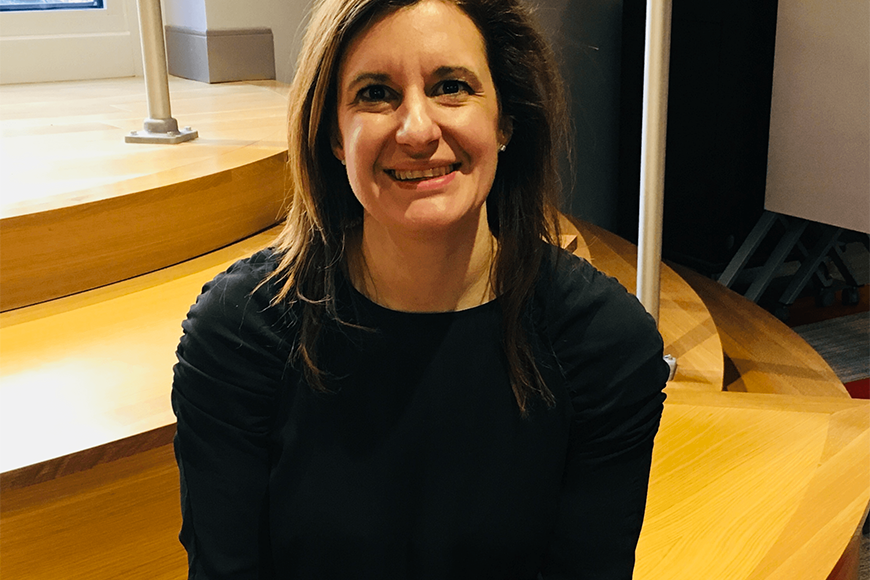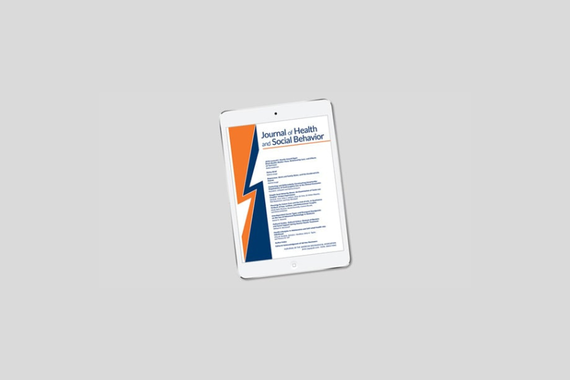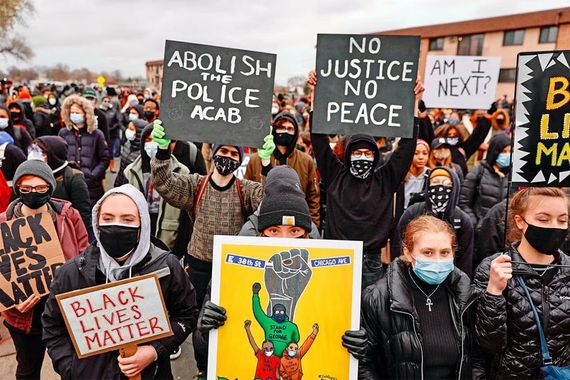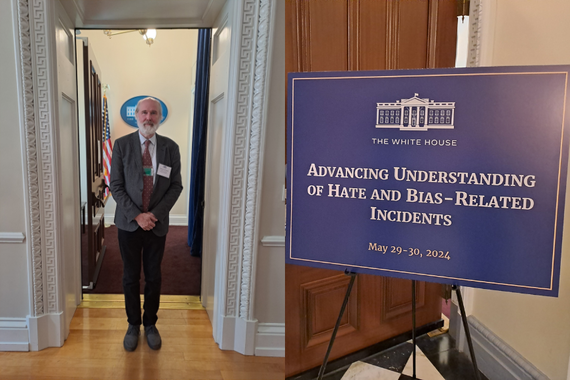Faculty Spotlight: Professor Claire Kamp Dush
UMN Sociology and the Minnesota Population Center (MPC) are proud to welcome an exceptional new faculty member to our community this fall: Professor Claire Kamp Dush. Professor Kamp Dush arrived in Minnesota this summer by the way of Ohio State University, and we are excited to see how her experience as a first-generation college student and her work in family demography and sociology will undoubtedly make a positive impact on the lives of our students and colleagues.
In this latest addition to our Faculty Spotlight series, we ask Claire a few questions about her background, her research, and the best part of living in Minneapolis (so far).
What were you up to before coming to UMN Sociology?
Before I came to UMN Sociology, I was a professor at Ohio State University in Human Development and Family Science. I was at Ohio State for 13 years and rose from Assistant Professor to Associate Professor to Professor in 2020.
What is your educational background?
I am a first-generation college student. I went to a really small high school (< 80 students) in rural west central Illinois, just across the Mississippi from St. Louis, MO. As a first gen student, I went to what I believed to be the best university in the US besides Harvard and Yale, the University of Illinois at Urbana-Champaign! I found my way to the Human Development and Family Studies major at Illinois, and worked with Joe Pleck, who did a lot of work on masculinity and fatherhood. I enjoyed research, and I thought – wow, you can get paid to do this? So Joe helped me figure out grad school, and I went to Penn State to get a PhD in Human Development and Family Studies. My first advisor was a clinical psychologist, and she did not get tenure, so I had to find a new advisor. Luckily, I had taken a class from sociologist Paul Amato the previous year, and Paul took me on as his advisee, even though I was not technically in Sociology. Sociologist Alan Booth was also on my committee, as were several psychologists and one communications scholar. After graduating, I made my way to Cornell to their Institute for the Social Sciences and their Evolving Family Theme Project. My main mentor was a Chicago-trained economist who was also a demographer, H. Elizabeth Peters. Liz, Dan Lichter, Sharon Sassler, Kara Joyner, and other demographers who were at Cornell at the time introduced me to the Population Association of America. I was smitten! I had wondered where all of the great scholars I had been citing were at, I found them all there at PAA. So, I had great, interdisciplinary training, and I tend to read and cite very broadly.
What inspired you to go into sociology?
I guess my first foray of technically going “into sociology” might be at the University of Minnesota (UMN)! This is my first time with an appointment in sociology, although I have worked with sociologists my entire career – most significantly with Miles Taylor at the University of Florida and Wendy Manning at Bowling Green State University. I was inspired to come to UMN Sociology because of all of the really great work happening at the Minnesota Population Center and in the department, and the amazing reputation of your program. I met with one of your alumni who is a faculty member at Ohio State about moving to UMN Sociology, and I literally thought you all paid her, she loved it so much. I am really excited to be part of this community!
What are your research interests?
My research interests are focused on family demography and sociology, and in particular, on marriage, cohabitation, and intimate relationships and their intersection with human development. I am interested in relationship quality and stability, family functioning and health, gender and work and family dynamics, and causal, life course, and longitudinal methods.
What projects are you currently working on?
I currently have two projects I am really excited about. The National Couples’ Health and Time Study (NCHAT) is launching on September 1! NCHAT is the first population-representative, multi-method, fully powered study of cohabiting and married couples in both different and same-gender couples in the United States. My team, working with Gallup, will recruit 2690 US adults aged 20 to 60 who are cohabiting or married to same- and different-gender partners, along with their partners. The sample will include an oversample of respondents of color, and in particular, Black respondents. We are collecting survey data and time-diary data. The survey includes data on family functioning, emotion regulation, stigma, discrimination, physical and psychological health, and health behaviors. Because of the pandemic, we are also asking about the coronarvirus and the murder of George Floyd. We are also planning to get dried blood spots to test for psychoneuroimmunological markers of stress as well. The data collection will be done in early 2021.
My other project is also a data collection. I am collecting a third repeated cross-section (i.e. a third wave) of the Work and Family Life Study (WAFLS) data, complementing and extending cross-sectional data collected in 1980 and 2000. The original data, from 2034 married individuals who were population representative of the US, was collected in 1980 by Drs. Alan Booth, David Johnson, Lynn Rogers, and John Edwards of the University of Nebraska, and was called Marital Instability Across the Life Course. In 2000, Drs. Alan Booth, David Johnson, Paul Amato, and Stacy Rogers, all now of the Pennsylvania State University, collected a second cohort called the Work and Family Life Study. The data included 2100 married individuals who were asked the survey from 1980. With this project, we will collect a population-representative 2020 cohort of 2000 married individuals in different-gender marriages via a phone survey, and 1200 married individuals in same-gender and different-gender marriages via a web survey. We will administer both the 1980/2000 survey, and we will administer an online supplement that will harmonize with NCHAT. We are currently waiting to go in the field until the pandemic is over, hopefully in Spring 2021.
What is your favorite thing about Minneapolis (so far)?
My favorite thing about Minneapolis so far is Lake Harriet which is a ten-minute walk from my house. My family loves to walk around the lake, especially at sunset.
This was me and my boys at Lake Harriet the night we moved to Minnesota, May 28th, 2020. We were so tired after the twelve-hour drive and a little sad after all the goodbyes but seeing this beautiful sunset on the lake made it all seem worth it.

Who (furry or human) lives in Minneapolis with you?
I live with my husband Aaron who is a specialty pharmacist at UnitedHealthcare, and our four sons, Toby (17), Leo (15), Frankie (11), and Kenny (7). I had Toby and Leo in grad school, and Frankie and Kenny on the tenure track, all the times that women aren’t supposed to have children in an academic career. We have two little dogs, Holly and Minne.
What do you like to do in your free time?
I love to read, all different kinds of books. I do both audio and digital books. A few favorite Minnesotan authors are Louise Erdich and J. Ryan Stradal. With my family, I love to play games particularly Catan and pinochle. I am pretty competitive according to my family. We also like watching anything set in the Star Wars universe and Parks and Rec. We are outdoorsy, and we like camping. We camped in Grand Marais this summer, which was really fun, and beautiful!



